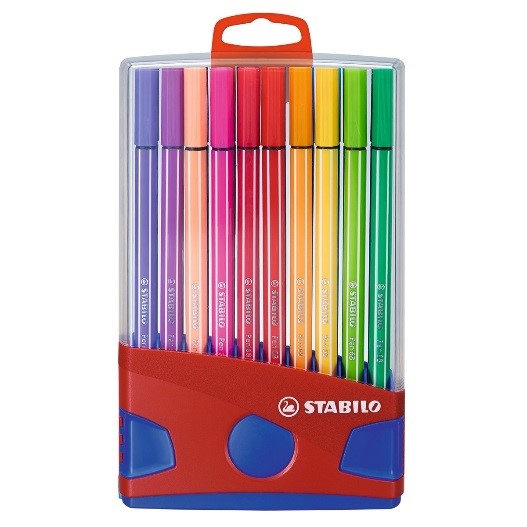The Lisbon Court of Appeal decided an action in which the plaintiff claimed copyright and trade dress protection for a pen, specifically the Stabilo Pen 68.
Citing the interpretation given by the EU Court of Justice in the the Cofemel judgement, the Court of Appeal found that copyright protection could not be recognized since the Stabilo Pen 68 was not considered an original work, in the sense of being an intellectual creation of their author.
The facts
Schwan – Stabilo Schwanhausser Gmbh & CO KG filed an action against Branco e Negro, Lda and Clave Denia, SA regarding the sale of certain pens in their online and physical Ale Hop shops. The plaintiff claims infringement of copyright on the Stabilo Pen 68 and unfair competition (based on product imitation and parasitic competition), seeking the prohibition of sales and damages.
The Stabilo Pen 68 is a coloring felt-tip pen marketed since 1968. It has a hexagonal shape and white edges, with the cap and the color of the wider sides of the pen matching the coloring color and alternating with the white stripes.
The defendant submitted that the claims are groundless since the plaintiff has no intellectual property rights and there was no unfair behavior. The IP Court agreed with the defendant and rejected the claims.
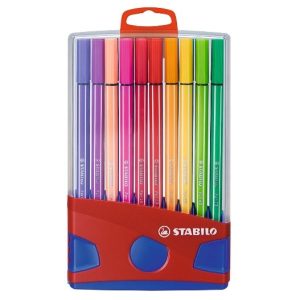
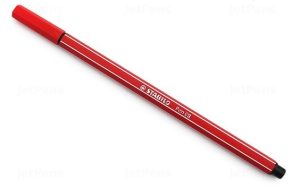 The Stabilo Pen 68
The Stabilo Pen 68
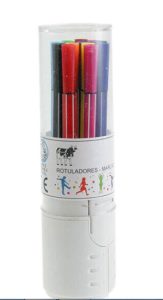
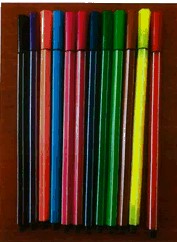 The defendant’s products
The defendant’s products
Court of Appeal
On appeal Schwan – Stabilo alleged that the absence of any form of industrial property right protecting the format and/or appearance of the Stabilo Pen 68 such as a 3D mark or a design right, does not exclude the possibility of copyright protection in accordance with the Cofemel judgment of the Court of Justice. The appellant mentioned in particular that the distinctive white edges of the Stabilo Pen 68 are the result of a “creative exercise and freedom” and not functional characteristics.
The higher court confirmed the findings of the 1st instance IP Court.
Cofemel
The Court of Appeal started by noting that the Portuguese legislature established the principle of cumulation of copyright law protection and design law protection, replicating in part article 17 of the Directive 98/71/EC thus leaving, to doctrine and case-law, the task of interpretation in accordance with the Court of Justice decisions namely the Flos case (C-168/09), the Infopaq International case (C-05/08) and the Cofemel case (C-683/17).
The court noted also that according to the Cofemel case, designs may benefit from copyright protection only if they are classified as “works” for the purposes of Directive 2001/29/EC, which implies two cumulative requirements: (i) it must be an original object, in the sense of being an intellectual creation of the author himself, reflecting his personality, expressing his free and creative choices; (ii) it must be an object identifiable with sufficient precision and objectivity. The CJEU stressed that the protection of designs, on the one hand, and the protection conferred by copyright, on the other hand, pursue fundamentally different objectives and are subject to different regimes and which are not mutually excluded, so that the fact that a design generates an aesthetic effect does not in itself make it possible to determine whether that model constitutes an intellectual creation which reflects the freedom of choice and personality of its author. The court conluded that “it has therefore become clear that not every design may benefit from the protection of copyright, but only those which, in the light of copyright, can be classified as works”.
Thus the court considered that notwithstanding the visual and aesthetic effects that characterize the Stabilo PEN 68 (arising from their shape, colors and, in particular, the white stripes), the pens in question are not original, in the sense of being an intellectual creation of the author, reflecting his freedom of choice, his personality, his particular perception of the world, nature and things, expressed (with precision and objectivity) through the creative act, transcending the mere utilitarian perspective.
Trade dress and unfair competition
The court accepted that in general the imitation of the external characteristics of a product, that is, its visual presentation (including “words, pictures, colours and shapes”), may amount to unfair competition because it may be a free ride on the competitor’s image, able to create confusion in the mind of the public.
However in the presente case, the plaintiff’s products have other features that prevent any possibility of confusion namely the word mark (STABILO) engraved on the pens themselves and on their packaging. This and their writing characteristics allows sufficient differentiation for consumers. Furthermore the plaintiff was unable to obtain registration of a 3D mark since EUIPO considered that the visual appearance of the pens – namely the hexagonal shape and the white lists – are not sufficiently different from other pens on the market. Consequently all claims were rejected.
For more information or any question sgcr@sgcr.pt.

